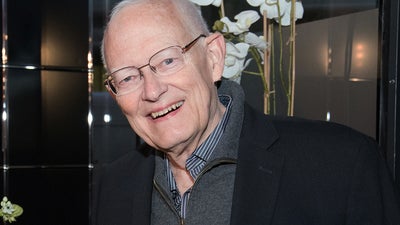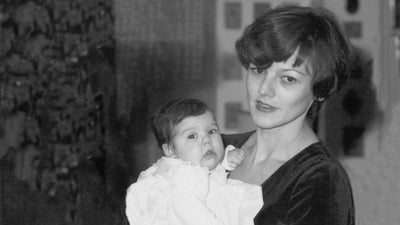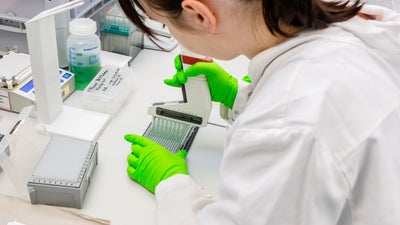Cutting-edge technology to find the best possible match between patient and donor
The DKMS Life Science Lab is the world leader in tissue typing for blood stem cell donor registries, transplant and research centers. Swab samples from all over the world are analyzed to find the best possible match. This is crucial for the success of blood stem cell transplants.
'Open your mouth. Swab your cheeks. Become a donor’. Every day, an average of more than 3,400 people worldwide sign up as blood stem cell donors with DKMS. Every single one of them has their tissue characteristics analyzed at the DKMS Life Science Lab in Dresden, Germany, in a procedure known as HLA typing. With well over 1.2 million cheek swab samples typed every year, the DKMS Life Science Lab is the largest and most innovative HLA-typing laboratory in the world.
Our DKMS Life Science Lab has been located in the former Dresden Central Bankbuilding since 2019. Once a fortress of gold and wealth, the spaces we now occupy are mission control in our own search for the greatest treasure of all: the right blood stem cell donor – fast. The DKMS Life Science Lab actively supports DKMS in the pursuit of its goal: to give blood cancer patients around the world a second chance at life.
Attached to the DKMS Life Science Lab are a clinical laboratory accredited by the EFI (European Federation of Immunogenetics) and the ASHI (American Society for Histocompatibility and Immunogenetics), plus a clinical search unit accredited by the ZKRD (German National Bone Marrow Donor Registry).
The DKMS Life Science Lab employs cutting-edge biotechnology procedures and is the first HLA-typing laboratory in the world to establish the new Next Generation Sequencing (NGS) technology – for high-throughput typing. It now uses the technology to type over a million potential stem cell donors a year. DNA samples from the lining of the mouth are analyzed to determine their exact genetic profiles with regard to their tissue characteristics (HLA characteristics). These profiles are vital for identifying the right donors for patients: their tissue characteristics must be as identical as possible to minimize the risk of complications after the stem cell transplant.
Most donor centres compare at least five HLA genes with two variations each — because a successful stem cell transplant depends, above all, on a good match of precisely these tissue characteristics in donor and recipient. However, even with ten matching tissue characteristics, rejection reactions or other complications are not uncommon after a transplant — and that’s why, at DKMS, we now type as many as twelve tissue characteristics as well as various other factors.
Thanks to ongoing improvements, we can provide much more information on transplant-relevant gene loci than just a few years ago — another area in which DKMS is a world leader by comparison. The DKMS Life Science Lab is also working on expanding donor profiles even further, to include additional genetic markers that have proven meaningful in scientific studies.
In 2018, the DKMS Life Science Lab was awarded the prestigious HLA Award in recognition of its outstanding scientific work.


